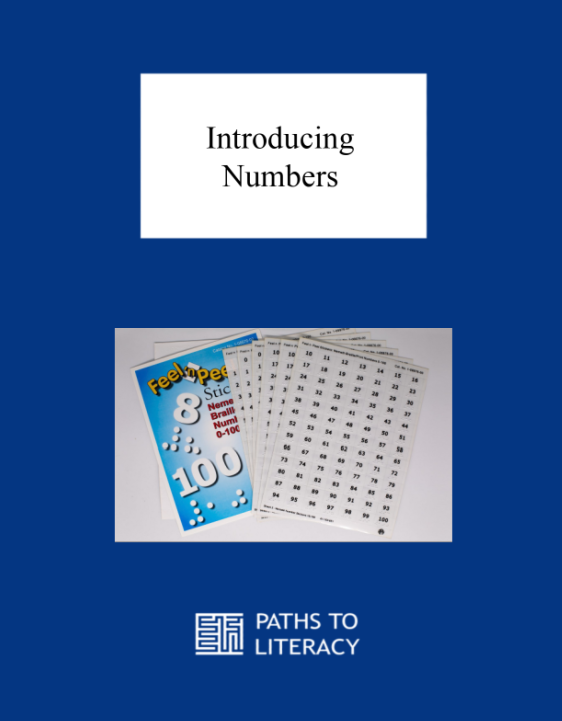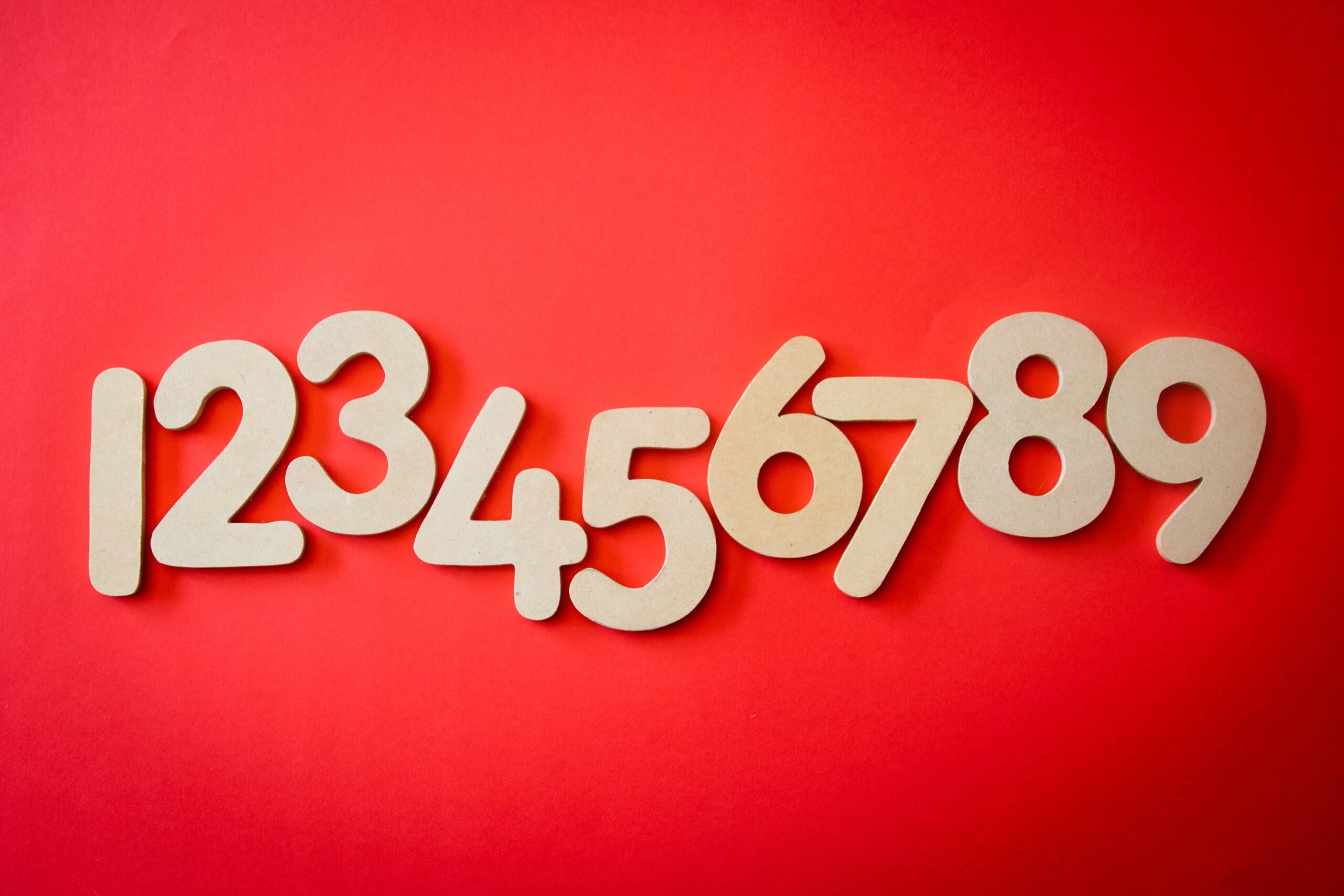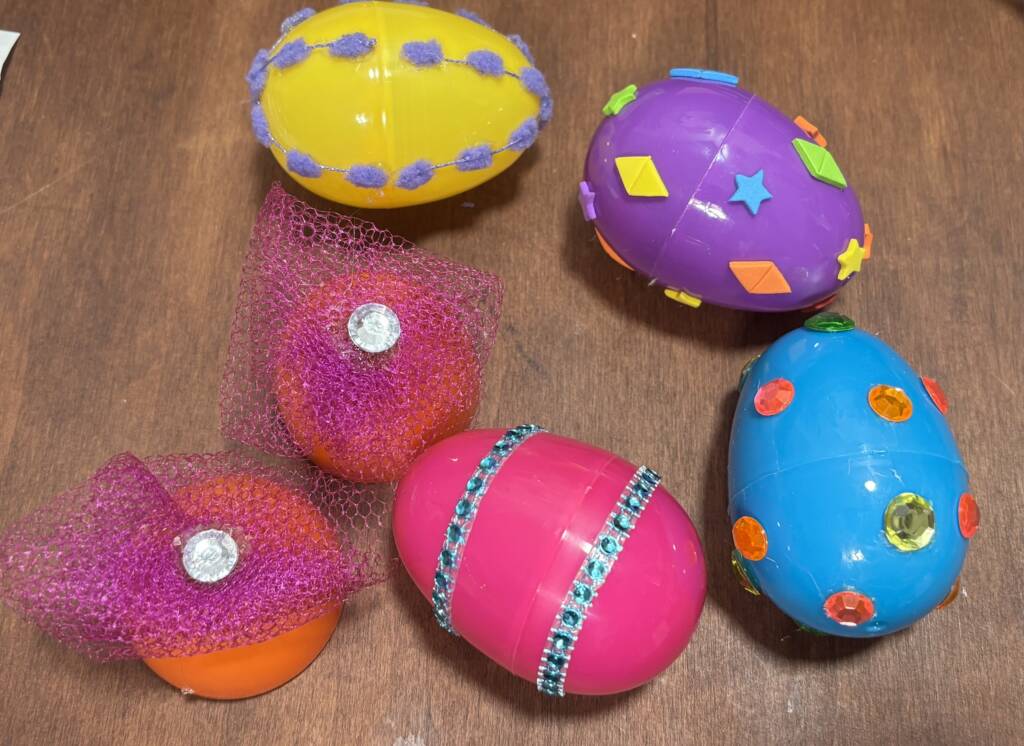Numbers are a huge part of our everyday lives. Starting to teach numbers to students is an important and natural progression of development.
The key is to inspire students, no matter what skill level.
Objective
The student will identify numbers 0-10.
Pre-assessment
What does the child know?
What do I want them to learn?
What skills are required for them to achieve this goal?
What adaptations must be in place for optimal learning?
Materials
- High contrast simple number books. Some classics: 10 Apples up on Top (Read aloud version here), 5 Little Pumpkins, 5 Monkeys Jumping on the Bed.
- Braille stickers to adapt flashcards and place on materials. They are made by American Printing House and qualify for federal quota.
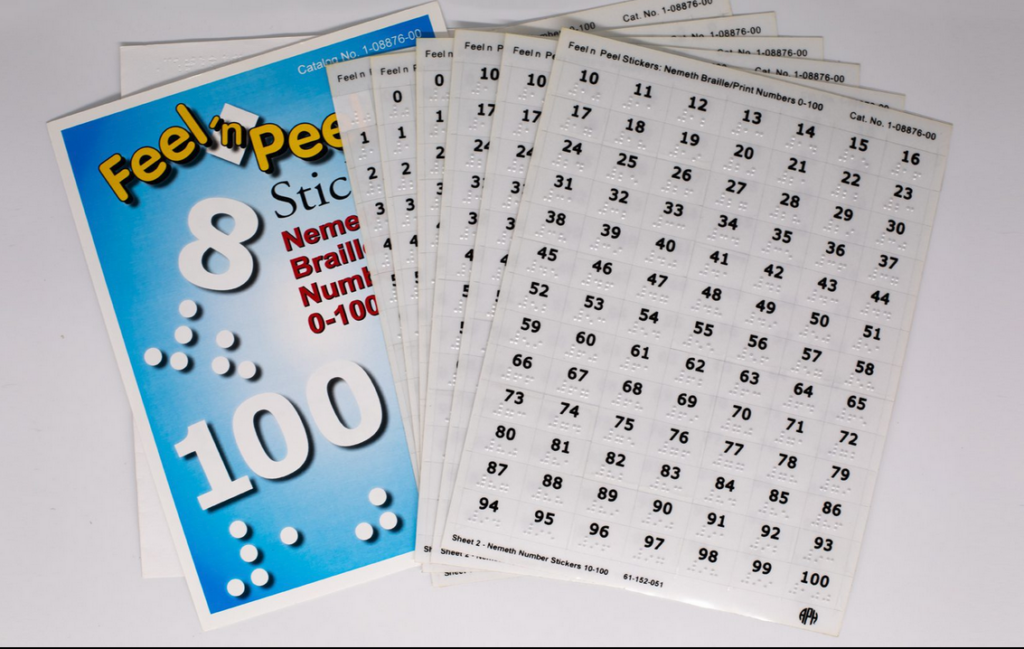
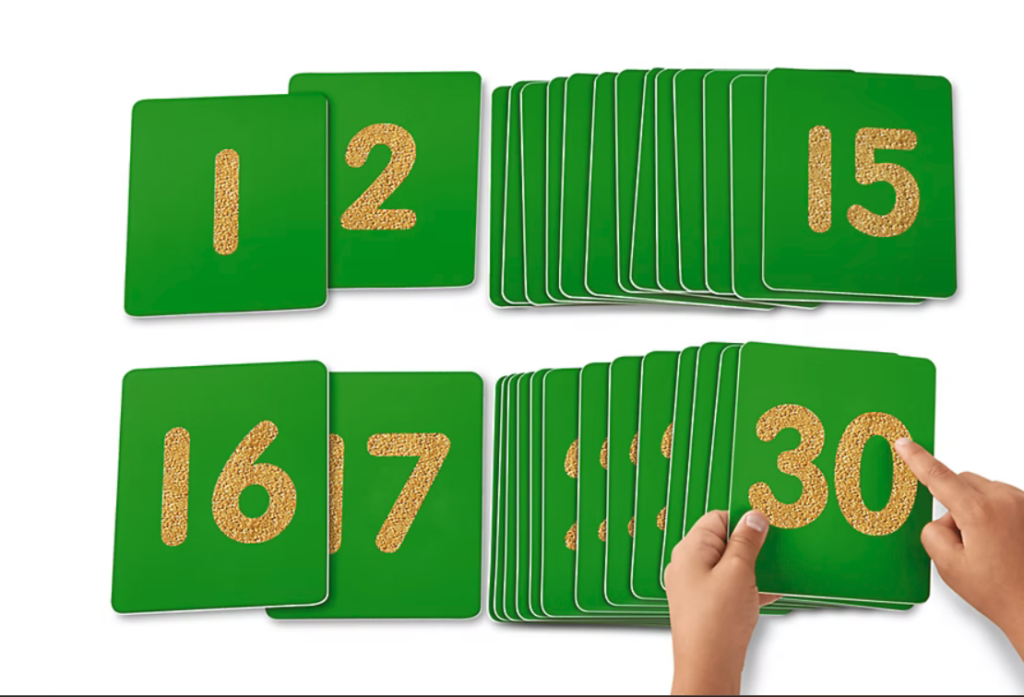
- Hundreds number chart
- Bins with high contrast numbers on them allowing students to count items into each bin
- Starfall is a very popular app for students learning numbers. This is great for Pre-K and can still be used through 1st grade.
- An excellent FREE app: Learn to Count Child Education

Ongoing
Count in everyday activities to make the everyday connection. Make numbers personal.
“Look, that is the number 5, that’s your number!”
“I see the number 6, that’s your number on your next birthday!”
“There is the number 3, that’s how old your sister is going to be next week.”
“Let’s count how many shoes you have while we put them in a row.”
Procedure
- Teacher will formally introduce numbers by placing flashcard numbers 1-5 in order.
- Teacher will hold up each card or allow the student to touch each card as they count to five. Repeat this several times.
- Play a game using numbers to reinforce the learning.
- Game ideas: clap the number, jump the number, put a yellow 3 inch paper circle under each flashcard to show what each number represents and count them, show 2 flashcards and ask the student to point to the correct number requested, have 2 sets of flashcards and match 1-5, play singing videos on an iPad or computer (I love “Five Little Pumpkins“).
- Starfall has great reinforcement learning activities.
- Allow for the student to independently read number books.
- Pick a number to focus on, usually one a week. Ideas for this: coloring pages (use colored glue to go over lines to make lines raised), have a number box, put the number on the door and each time you leave or enter clap the number and trace it with your finger.
- Put items in a bin (apples in a basket) with the correct flashcard number on it.
More Math Ideas
APH’s hundreds chart has many uses including addition, subtraction, multiplication, and patterns. Use this to count to one hundred over and over again. This helps students understand that numbers go on FOREVER. It is also nice to find a peer who is good at counting and have them help. This is also the time to introduce skip counting: 10, 20, 30, 40…
Tips
- Make sure you have the child point and look while counting, however be mindful of fatigue and if the student has CVI. If it’s too much, take a break or practice auditorily.
- Ensure that manipulatives are easy to see and do not move around too much. If they do, kids will recount or lose count. I started using 2 inch sticky notes on black cardstock so they stay in place as counting manipulatives.
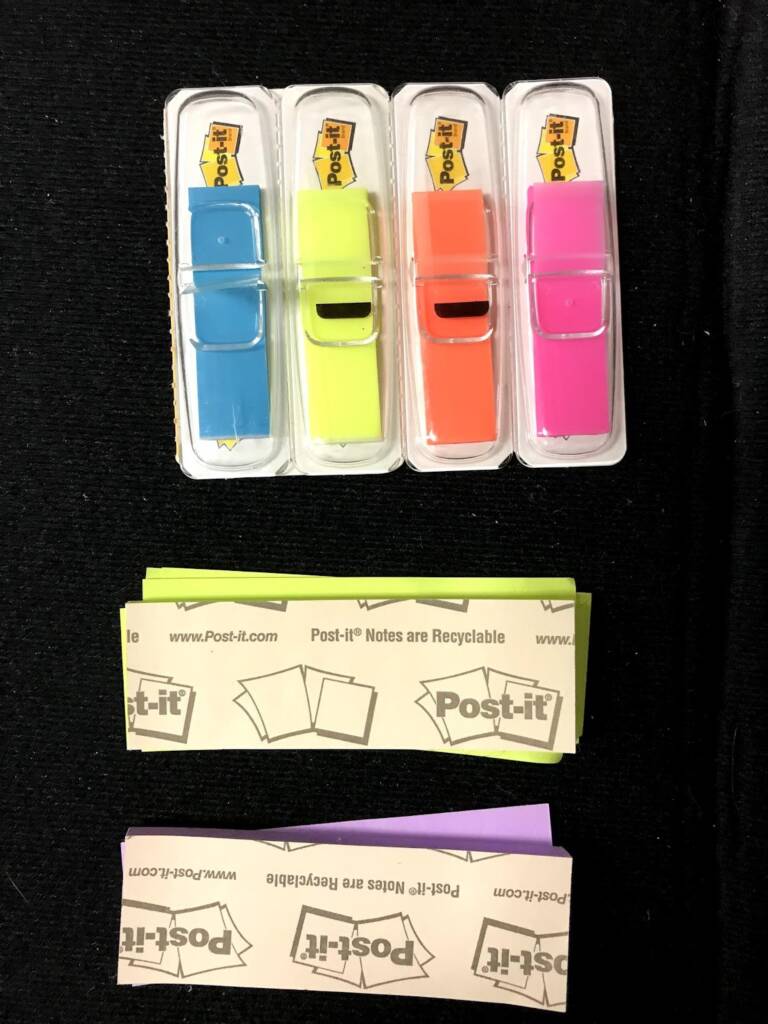
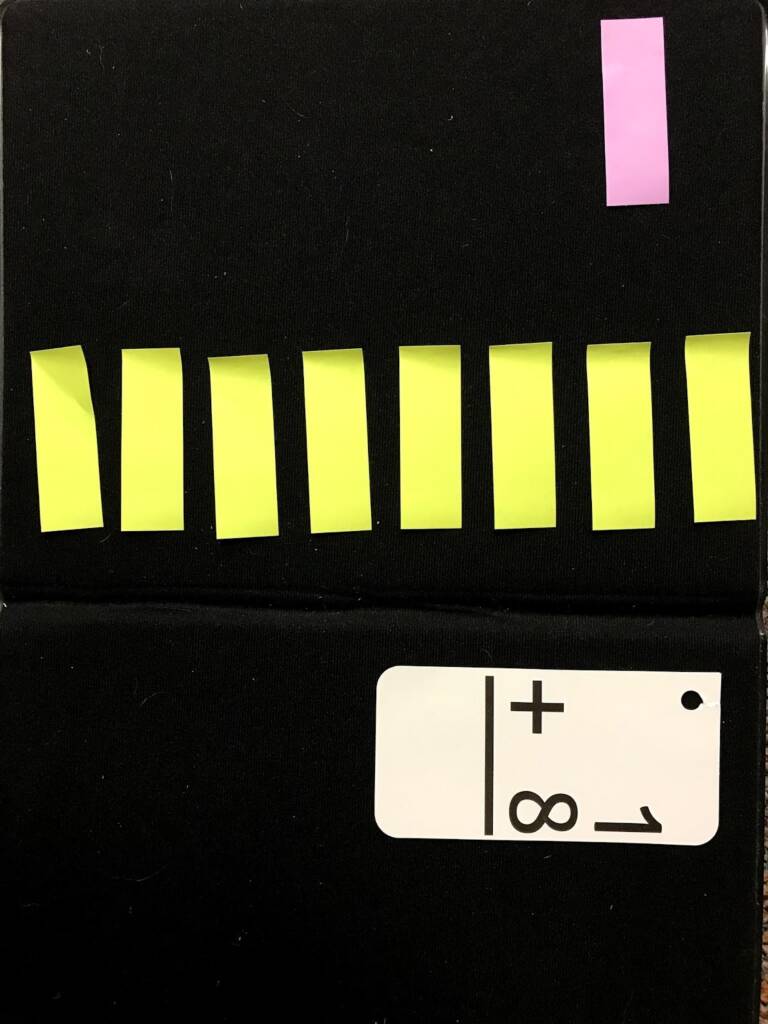
- Consistency is key.
- Always start counting left to right.
- Play games with small numbers (1-5) and repeat the same games until there is success.
- Avoid changing flashcards, the look of numbers, fonts, etc., until the student is proficient at recognizing numbers. Novelty will confuse them.
- Zero is a hard concept to grasp, so don’t be surprised if they are confused by the meaning of “nothing.”
Homework
Keep it simple, give them ideas but don’t overwhelm.
Introducing numbers and learning to count is something most parents can do with their children in their everyday activities. How to Teach Kids Numbers: 10 Ideas for Parents
Homework to bring to school: I like to pick a number each week, have them bring items in a bag to equal that number: 1 apple, 2 balls, 3 acorns, 4 cotton balls, etc.
Assessment
If you have a student with a brain based vision impairment, the introduction will be novel.
Assess not test. A test means there can be failure. There is no failure with data collection and assessment and then adjust to meet the student where they are at.
The child has achieved this learning activity when they can “tell” verbally or by showing you the following: count 1-10, put numbers in order, understand that numbers have meaning…with their appropriate adaptations of course.
